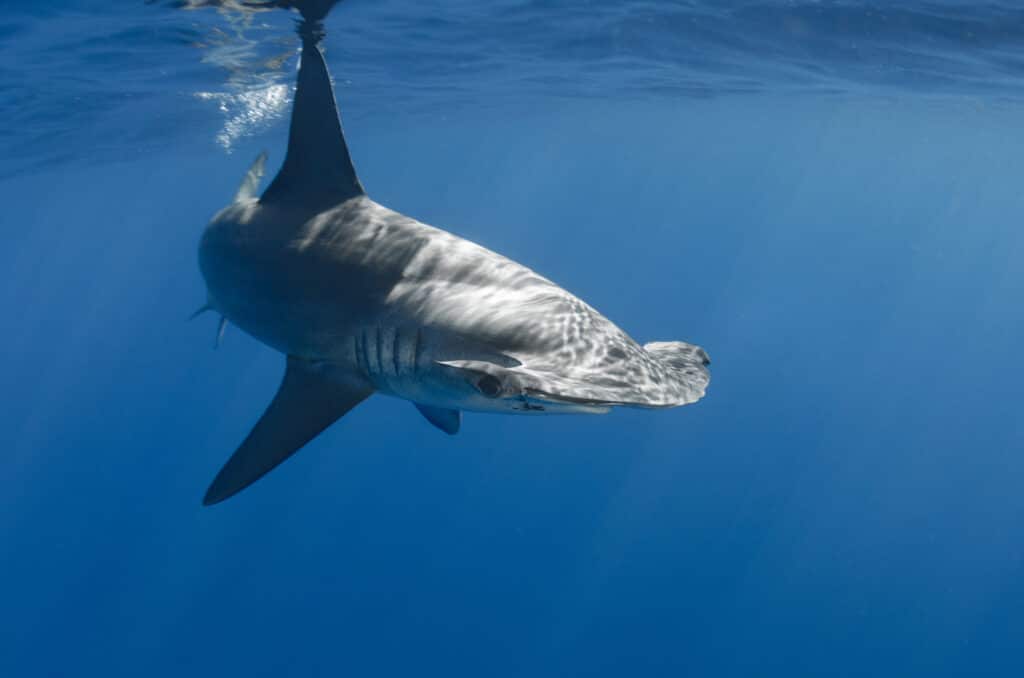As Long Island’s ocean beaches prepare for one of their busiest weekends of the year, New York State is expanding its shark monitoring efforts with advanced new equipment and trained personnel aimed at keeping swimmers safe.
Gov. Kathy Hochul announced that just in time for the 4th of July weekend, the state has enhanced its shark surveillance program with upgraded drone technology and more trained operators. While drones have been a part of shock monitoring strategy and past seasons, this year’s editions mark a major advancement and show how the state can detect and respond to potential threats in the water at beaches and state parks, including Jones Beach, Robert Moses, Gilgo, and Montauk Point.
A new large-scale enterprise drone has been assigned to the New York State Park Police. The drone is equipped with thermal, laser range, and high-definition cameras, allowing it to conduct surveillance at night and in poor weather. It can also drop personal flotation devices in emergencies, giving it life-saving potential beyond shark detection.
“Our Long Island State Park beaches are cherished by New Yorkers and visitors alike,” Hochul said. “We are continuing to strengthen our shark surveillance capabilities and safety tactics at these beaches to help protect these treasured summertime traditions.”
Read also: Shark ‘likely’ bit woman at Jones Beach, officials say
This advanced drone joins an expanded fleet that now includes 28 drones, six more than last summer, and a team of 48 certified operators among lifeguards, park police, and state park staff. Together, they patrol the beaches from the air in coordination with lifeguards who monitor the shoreline and water by surfboard and personal watercraft.
If a shark is spotted, swimming is immediately suspended, and the water is cleared. At least one hour must pass after the last confirmed siding before swimming is allowed to resume. During this time, drones and beach patrol monitor the area closely to determine when conditions are safe again.
The state is also working with the Long Island Coastal Awareness Group, which includes more than 200 members from municipalities, agencies, and private beach operators from Queens through the East End. This network is notified of a shark sighting to ensure a coordinated response across jurisdictions.
Randy Simons, acting commissioner of the New York State Office of Parks, Recreation and Historic Preservation, said the new technology represents a leap forward in beach safety.
“Our staff is well prepared to safeguard beachgoers this summer season, and we’re excited to adopt the latest technology to be even more effective,” Simons said.
State officials emphasize that while shark encounters remain rare, beach goers should stay alert, follow posted safety guidelines, and always heed the instructions of lifeguards and park staff. New York State also introduced two new bilingual virtual reality headsets to educate the public about rip currents. The headsets are available during water safety outreach events through Sept. 6th and simulate dangerous water conditions and teach users how to spot and survive rip currents.
“Visits to Long Island’s ocean beaches are a treasured part of summer plans,” said Amanda Lefton, commissioner of the New York State Department of Environmental Conservation. “Being aware of rip currents, following the State’s shark safety guidance, and keeping in mind that our coastal areas are part of a wild and natural marine ecosystem will help swimmers avoid danger while enjoying some fun in the sun.”
For more information on beach safety and shark monitoring, visit parks.ny.gov.































